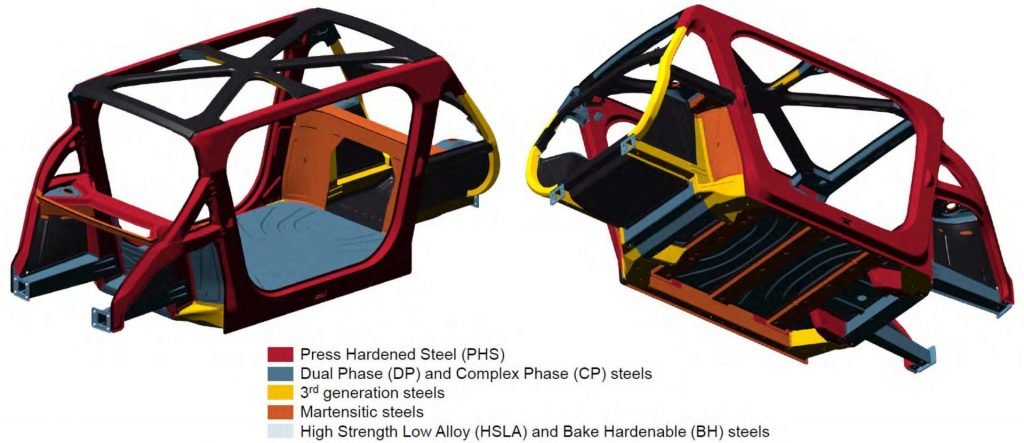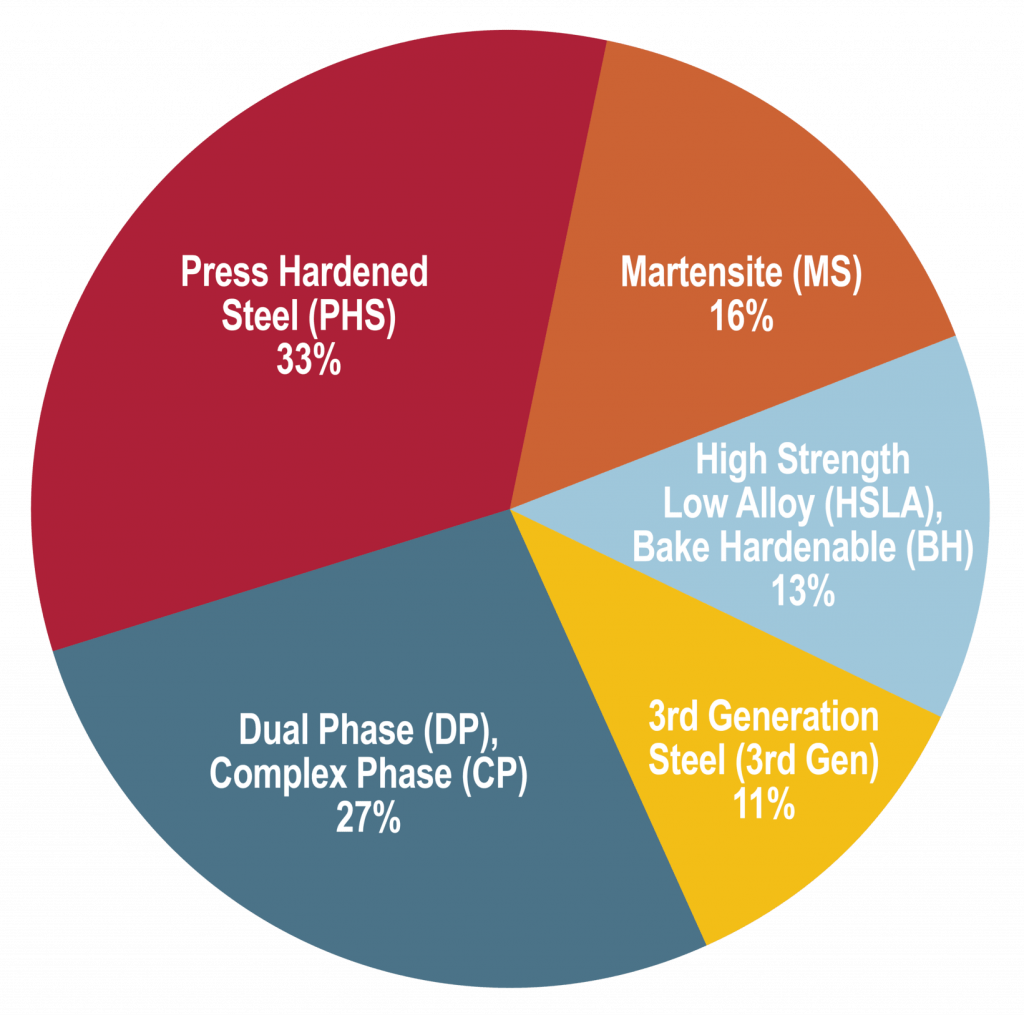Steel E-Motive represents a fully autonomous ride sharing vehicle concept showcasing the strength and durability of steel with a critical focus on sustainability for reaching net zero emissions targets. The results are comfortable, safe and affordable body structures that support automakers in the continued development of Mobility as a Service (MaaS) ride sharing models.
The program highlights two virtual concepts designed for 2030 to 2035 deployment: SEM1, a four-passenger urban transport, and SEM2, a six-passenger extra-urban commuter, both designed for Level 5 autonomy with no steering wheel or pedal box. Both vehicles have the potential for more than an 85% total lifecycle CO2 emissions reduction by 2035, based on a comparison with a reference 2022 battery electric vehicle (BEV). A rigorous Life Cycle Assessment (LCA) approach was applied throughout the development of the Steel E-Motive concept. Both of these facets are highlighted in Figure 1.

Figure 1: Key Contributors to Life Cycle Emissions Accounting Include Decarbonized Steel Production, Projected Battery and Electrical Grid Performance Improvements, and Operational Contributions of Autonomous MaaS.
Vehicle life cycle performance can vary considerably depending on where the vehicle is manufactured and operated. To account for this, life cycle performance of the Steel E-Motive concept was calculated for Europe, US, China, Japan and India regions.
Steel E-Motive concepts were developed for mixed traffic mode operation – thus safety was paramount. The SEM1 concept vehicle represents one of the world’s first autonomous vehicle engineered to meet global high speed crash regulations that can achieve the IIHS “Good” rating. The battery packaging approach is 37% lighter and 27% lower in cost than average reference battery case structures, and applicable for current BEVs in development. This innovation includes an air gap between the battery modules and removable bottom cover, providing additional security from road debris, and the opportunity for battery inspection and local repair, vs. battery box replacement.
Detailed simulations showed both concepts are manufacturable using global manufacturing and supply infrastructure at costs that can support profitable margins, both for the vehicle manufacturer and mobility service providers. Annual volumes of more than 250,000 vehicles for SEM1 and 90,000 units for SEM2 were contemplated in the projections.
Using the newest steel grades and fabrication processes, Steel E-Motive’s portfolio enables tailoring vehicle properties that achieve significant comfort, safety, and cost advantages with seven key innovations:
- A one-box open body B-pillarless structure provides a wider door aperture for easy ingress/egress, disabilities access and facilitates delivery services.
- A scissor door design integrating side impact protection directly into the door frame creates a compact section for better passenger visibility and improved passenger access while eliminating the body side outer for mass and cost savings.
- The Extended Passenger Protection Zone created with Advanced High Strength Steels provides excellent intrusion protection for rear-facing front passengers.
- The Short Front Crash Zone structure enabled by the use of PHS, MS and laser welded blanks meets the most stringent global crash requirements.
- The Small Offset Crash Glance Beam minimizes cabin intrusion and lowers crash pulse by creating a “glance-off” the barrier – preserving door ring and battery in 64 kph small overlap rigid barrier simulations.
- Hex beam energy absorbers in the rocker minimize side crash intrusion and achieves superior battery protection.
- An industry-first Battery Carrier Frame eliminates the conventional battery case, utilizing the existing floor as the top cover, and features an AHSS triple-skinned bottom cover that seals the battery and provides protection from road debris and jacking errors.
The Steel E-Motive program meets these requirements through extensive use of Advanced High-Strength Steels which offer favorable combinations of strength, ductility, toughness, and fatigue properties.
Different AHSS grade have unique properties which can be beneficial to different parts of a vehicle structure. Dual Phase and Transformation-Induced Plasticity steels are used in vehicle crash zones for their high energy absorption. Intrusion prevention is accomplished through the use of Martensitic and Press Hardened Steels.
The average tensile strength of the body structure is more than 1250 MPa, facilitating a lightweight structurally safe vehicle designed and fabricated to minimize the lifecycle carbon footprint.
The figures below highlight the types and deployment strategy of the steels used in the Steel E-Motive body-in-white. The full spectrum of grades in the portfolio are shown on our Defining Steels page. Of the grades shown in the full portfolio, 18 grades of steel, at 12 different gauges, were used in the primary Bill of Materials (BOM) for SEM1, for an average part sheet steel thickness of 1.2mm.


